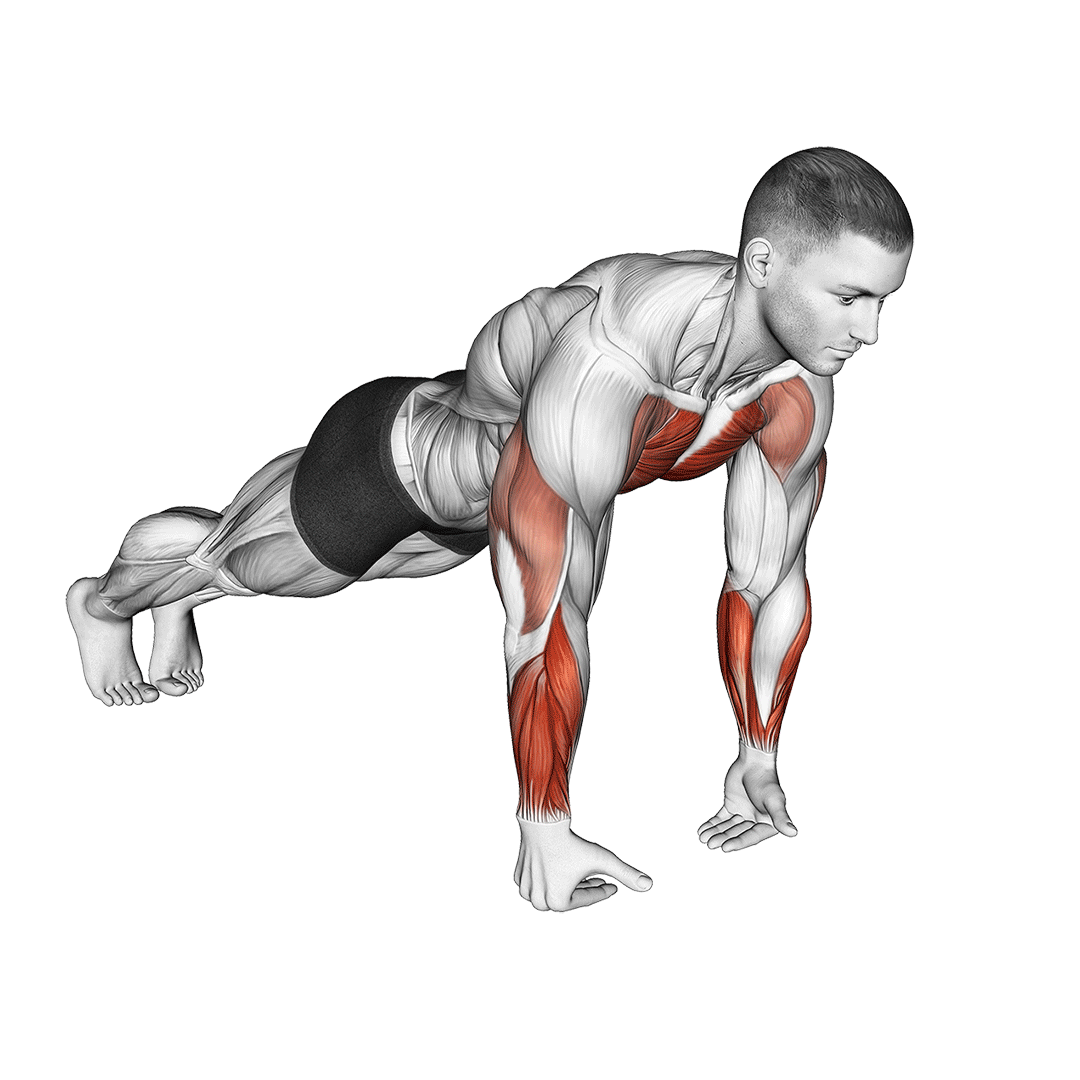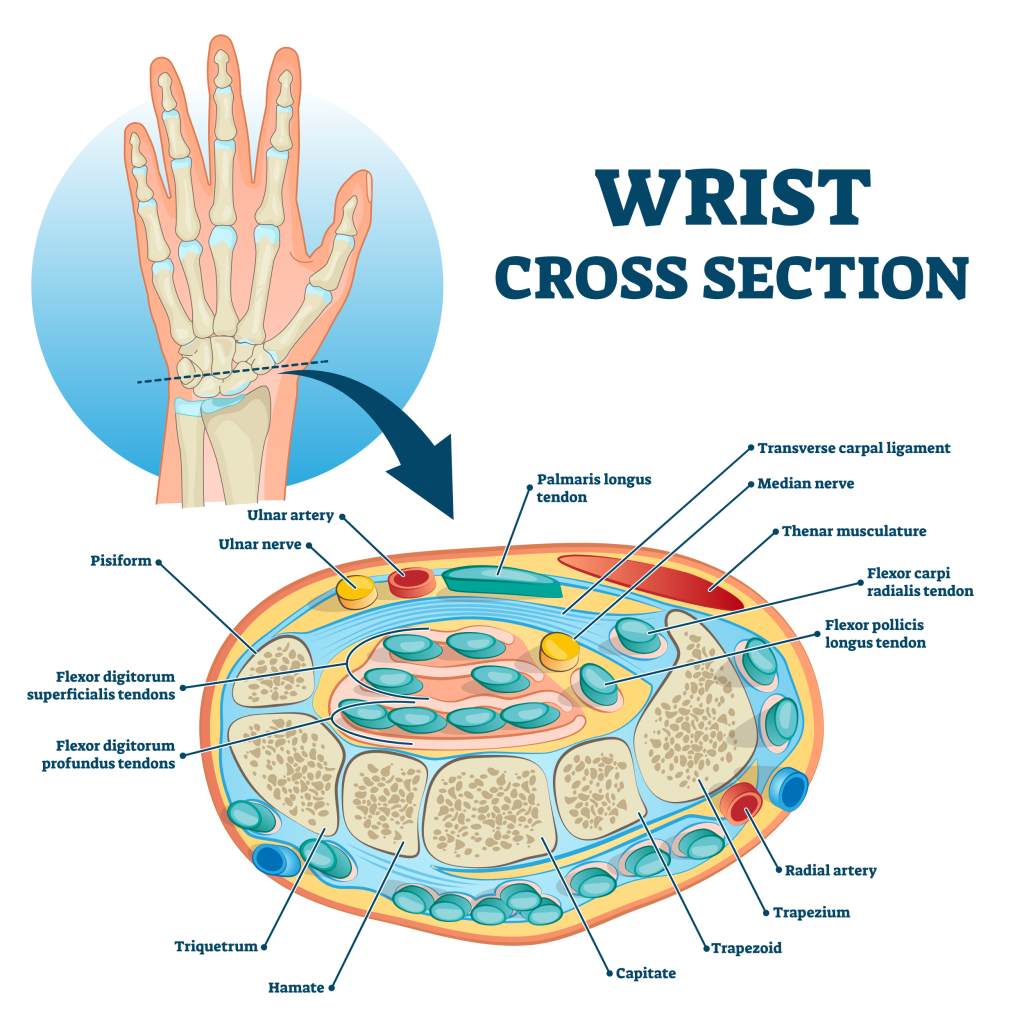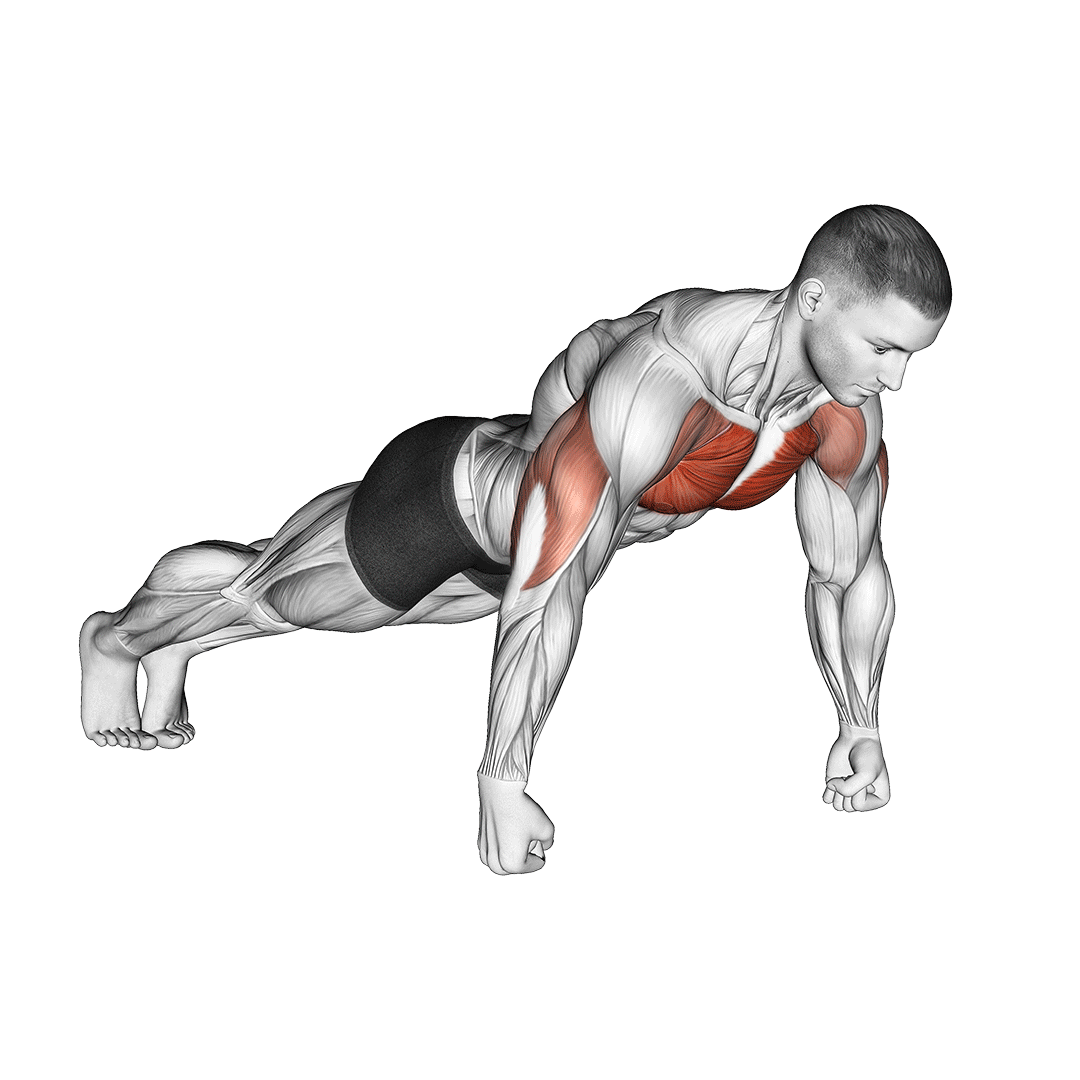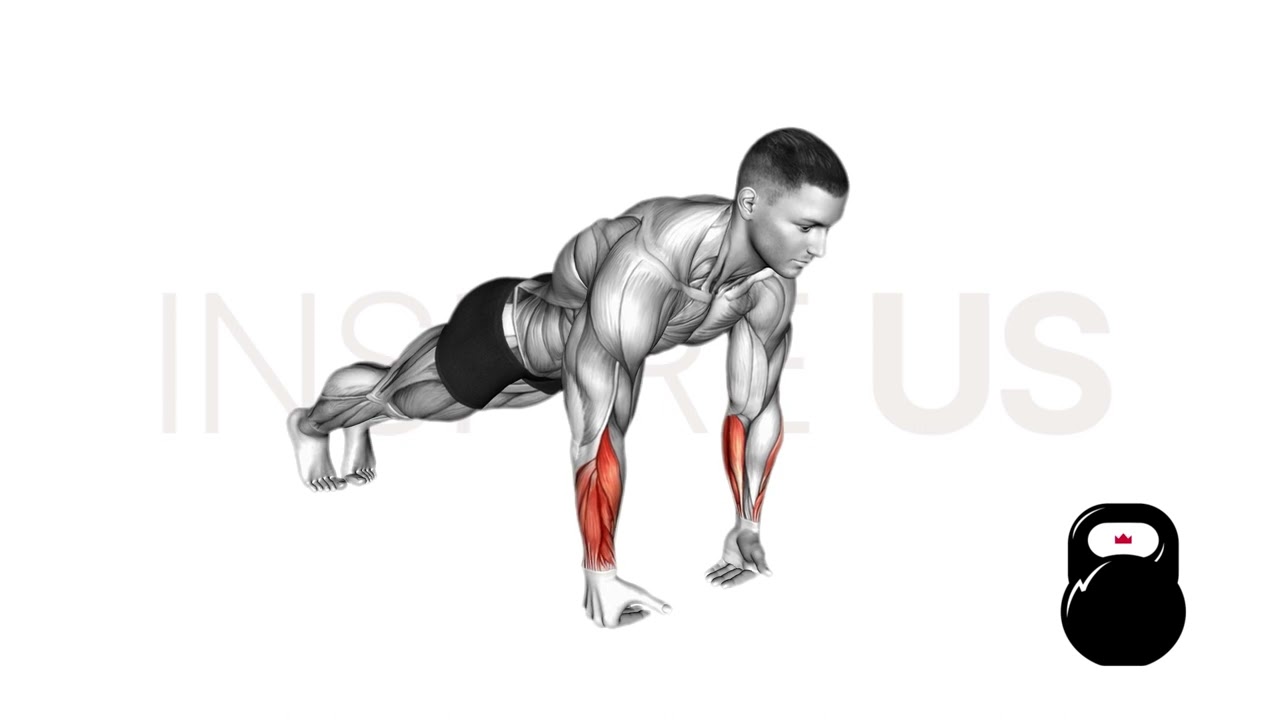Wrist Push Up: Benefits, Muscles Worked, and More
To put it in technical terms, the wrist push-up is a multi-joint compound exercise performed with the athlete’s own body as a source of resistance. It is considered to be an advanced calisthenic movement due to the inherent risk of wrist injury, and is more often seen in martial artist conditioning plans, rather than actual calisthenic workouts.

Wrist push-ups are programmed in a more case-by-base basis, and it is up to the athlete to decide whether their wrists are sufficiently conditioned enough to perform high-volume sets or not.
A good starting point is to attempt an easier variation of the wrist push-up on a soft surface before performing full sets of wrist push-ups.
Who Should Do Wrist Push-Ups?
Wrist push-ups require both an already-conditioned body and mastery of general push-up mechanics, and as such are better reserved for more experienced athletes and calisthenic exercisers.
Performing wrist push-ups before mastering regular push-ups can lead to discomfort and injury, and there are far easier alternatives that are less likely to damage the wrists.
How to do Wrist Push-Ups
To perform a repetition of wrist push-ups, the exerciser will assume the standard push-up plank position - though with their hands bent inwards, fingers pointed at each other and knuckles touching the floor.
This may require a somewhat more externally-rotated shoulder position, and will likely cause some initial discomfort along the skin of the knuckles.
For the most comfort, perform wrist push-ups on a yoga mat or similarly soft surface.
Having entered the wrist push-up stance, the exerciser will then proceed with the push-up as normal by bending at the elbows and lowering their chest towards the ground, taking care not to lose their balance or hyperextend the wrists.
Once the chest is within several inches of touching the floor, the exerciser will then push through their wrists into the floor, rising until they have returned to the starting position.
What Muscles are Worked by Wrist Push-Ups?
Wrist push-ups are a compound exercise, and as such will train more than a single muscle group at a time.
While muscular development isn’t the specific focus of wrist push-ups, there is nonetheless a level of hypertrophy and strength development that can occur as a result of performing the exercise.

The muscles worked to a greater degree and in a dynamic manner are called the “primary” mover muscles, whereas those worked to a lesser degree are referred to as “secondary” mover muscles, and the few muscles used in an isometric capacity are called the stabilizer muscles.
Primary Mover Muscles
Wrist push-ups will primarily target the pectoral muscles of the chest, the anterior head of the deltoids and the triceps brachii.
Secondary Mover Muscles and Stabilizing Muscles
Other muscle groups trained in a dynamic capacity by the wrist push-up are the brachioradialis and the serratus anterior - whereas muscles that are mainly used in an isometric manner are those of the core, those of the forearms and the glutes.
This means that - while the forearms are recruited by wrist push-ups - it is unlikely that any significant muscular hypertrophy will occur therein, making wrist push-ups ineffective at building forearm muscle mass.
What are the Benefits of Doing Wrist Push-Ups?
Apart from developing muscle mass in the chest, shoulders and triceps - the wrist push-up is also quite effective at creating a few benefits that are difficult to replicate with any other exercise, making them especially unique in regards to conditioning and sports specificity.
Athletic Carryover - Especially to High-Impact Sports and Gymnastics
The wrist push-up is considered to be an athletic training staple for a reason - not only does it reinforce the non-muscular tissue of the wrists and hands, but it will also aid in conditioning the athlete towards experiencing discomfort at their extremities.

These two factors make the wrist push-up particularly useful for competitors in high-impact sports like martial arts or football, where the wrists or hands may be subjected to high levels of impact.
Furthermore, the fact that wrist push-ups improve the stability and flexibility of the arms as a whole makes them particularly useful for gymnasts, who can make use of both benefits quite effectively.
Improved Wrist Flexibility
As was touched upon in the previous section, wrist push-ups are capable of improving the flexibility of the wrists and the muscles of the forearms by keeping them in a lengthened state for the duration of each set.
While this is not likely to produce the same benefits as a pre-workout dynamic stretching routine, it will nonetheless result in greater flexibility of the extensor muscles, finger pronators and other soft tissues located in the lower arms.
Greater flexibility equates to a lower risk of injury and a greater capacity for range of motion - meaning that not only athletes will benefit from regular performance of wrist push-ups.
Comparatively Greater Forearm Recruitment
Though wrist push-ups won’t quite recruit the forearms in a dynamic fashion, they nonetheless feature far greater isometric recruitment than would be seen with conventional push-ups - or nearly all other push-up variations, for that matter.
Exercisers that wish to improve their forearms in their role of stabilizers will find that performing wrist push-ups alongside forearm isolation exercises like farmer’s walks and dead hangs will greatly enhance the muscles therein.
Reinforcement of the Wrist and Forearms
The main reason why wrist push-ups are performed in the first place has to do with their inherent capacity to reinforce the lower arms, thereby reducing future risk of injury and conditioning them to pressure.
All forms of resistance exercise are capable of strengthening non-muscular tissue, but creating controlled and focused pressure allow such adaptation to be taken to another level - provided that they are programmed correctly, and that the exerciser does not exceed their own physical limitations.
As a side note, there are many other ways to reinforce the wrists and hands that do not share the same risk of injury as wrist push-ups, many of which are also performed by martial artists and other types of athletes as well.
Most Dangerous Mistakes to Make for Wrist Push-Ups
As complex as wrist push-ups are - there are several mistakes that are especially likely to result in pain and injury.
These errors primarily revolve around training programming or poor form, but regardless should all be corrected in order to protect the hands and wrists from becoming damaged by the exercise.
Extending the Wrists at Maximum Depth
Though it may be tempting to give the upper body a boost by extending the wrists during the second half of the repetition, exercisers should strive to keep their wrists in as stable and solid a position as possible.
Extending the wrists can easily place the entirety of the upper body’s weight atop the small bones of the hands, creating more pressure than they are designed to take in such a position.
To avoid this particular form error, the exerciser should keep the back of their hands splayed flat against the ground throughout each repetition, ensuring that the wrists move as little as possible.
Starting Too Soon
Perhaps the most frequent cause of injury from wrist push-ups is not how they are performed, but rather when.
Novice athletes or individuals with a history of wrist injury do not have the necessary flexibility and conditioning required to perform wrist push-ups safely, and doing so can easily result in the pressure of the upper body damaging the tissues of the forearms, hands or wrists.
Before transitioning to wrist push-ups, exercisers should first ensure that they are capable of safely performing knuckle or bar push-ups - both of which also place strain on the lower arms, but to a lesser extent than wrist push-ups.
Flaring the Elbows
While flaring the elbows is a mistake in all types of push-ups, it is especially injurious during wrist push-ups due to the position in which it will pull the wrists - potentially leading to the exerciser losing their balance, if not damaging their forearm flexor tendons.
As much as possible, the elbows should be pointing away from a lateral angle, meaning that they will be facing in a direction more towards the rear of the torso, rather than out towards the sides. This will reduce strain on not only the hands and wrists, but also the elbows as well.
Kipping or “Cheating” the Push-Up
Cheating a push-up is primarily done by performing the descending portion of the exercise too rapidly, allowing gravity to pull the torso downwards in an uncontrolled manner.
During conventional push-ups, this will only negate the effectiveness of the exercise. But in wrist push-ups, cheating the exercise in such a manner can cause even more pressure to be placed on the hands and wrists, greatly increasing the risk of injury alongside the negation of muscular recruitment.
Each repetition of the wrist push-up should be performed in a slow and controlled manner, with care being taken to properly recruit the muscles of the chest, shoulders and triceps.
Wrist Push-Up Variations or Alternatives
For athletes who have yet to reach the level of conditioning needed to perform wrist push-ups safely, or those who simply do not enjoy them - there are a number of possible variations (and a few alternatives) available.
1. Half Wrist Push-Ups
Half wrist push-ups are exactly as they sound - a variation of the standard wrist push-up, but with one half in the conventional palms-down position instead.

This can help reduce the amount of pressure placed on the hands and wrists, as well as greatly reduce the risk of injury by providing the palms-up hand with additional support.
2. Knuckle Push-Ups
For exercisers without the flexibility to perform wrist push-ups, an equivalent exercise can be found in knuckle push-ups.

Much like wrist push-ups, knuckle push-ups are performed for the purposes of strengthening the hands and wrists - and are also a staple of martial artist training programs.
To switch from wrist push-ups to knuckle push-ups, all that is needed is to form a fist with the hands, rather than laying the knuckles flat on the floor.
3. Finger Push-Ups
Another push-up variation that serves the same purpose as wrist push-ups - finger or fingertip push-ups also reinforce the tissues of the hands and wrists, although with a greater focus on the tendons and muscles responsible for finger extension.

Fingertip push-ups feature the same mechanics and risk of injury as wrist push-ups, and should be programmed with those factors in mind.
Wall Wrist Push-Ups
For exercisers too heavy or without the conditioning needed for conventional wrist push-ups, performing the exercise with the wrists set against a wall can be an effective alternative.
Once sufficient strength has been built in the hands and wrists, they may attempt to transition to wrist push-ups on the ground instead.
Frequently Asked Questions (FAQ)
Are Wrist Push-Ups Bad for You?
There is no arguing with the fact that wrist push-ups are inherently risky, but that doesn’t mean they are necessarily bad for you. If performed with correct form, proper programming and an understanding of the risk of injury involved - wrist push-ups can be a useful tool for any martial artist or athlete.
Keep in mind that wrist push-ups are not your sole choice of wrist-strengthening exercise, and that other movements like knuckle push-ups or farmer’s walks can be just as effective.
Which Push-Up is Best for Forearms?
In terms of pure muscular contraction, knuckle push-ups are possibly the best contender for training the forearms with a push-up variation. Other exercises like the fingertip push-up, wrist push-up or reverse push-up can also train the muscles of the forearms to a similar degree.
Are Wrist Push-Ups Worth it?
Whether or not wrist push-ups are worth the risk will depend on who is performing them.
Martial artists and athletes may see the potential long-term damage to their wrists as the cost of gaining a competitive edge, whereas casual exercisers or individuals who wish to avoid injury may be better off without wrist push-ups instead.
If you have chosen to include wrist push-ups in your training routine, ensure that an extensive wrist mobility drill is performed prior to the workout, and that your doctor has approved you for such exercises.
References
1. Hong AR, Kim SW. Effects of Resistance Exercise on Bone Health. Endocrinol Metab (Seoul). 2018 Dec;33(4):435-444. doi: 10.3803/EnM.2018.33.4.435. PMID: 30513557; PMCID: PMC6279907.

